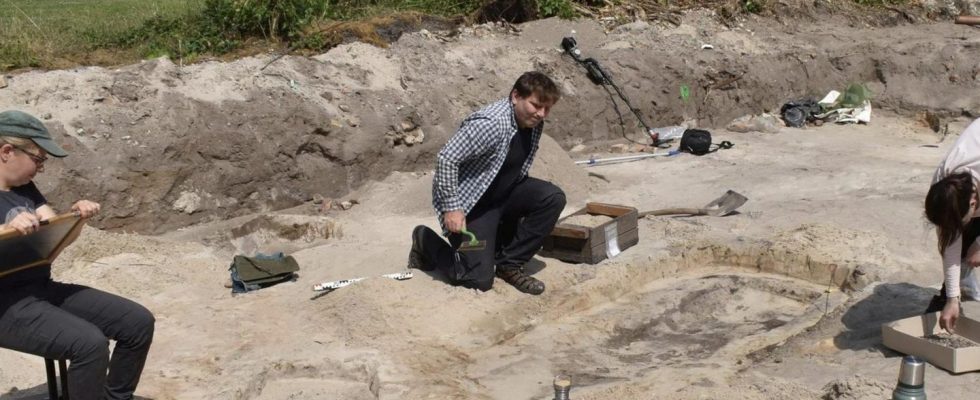archeology
Grave field from the year 1000 discovered in Brandenburg – archaeologists are faced with several mysteries
The archaeologists at work
© Lower monument protection authority of the city of Brandenburg an der Havel
During road construction work in Brandenburg an der Havel, 18 graves from the early Middle Ages were discovered. The buried were apparently quite wealthy. And their burial sites are different from others from the same region.
In Brandenburg an der Havel, a little to the west of Potsdam, only one road was supposed to be repaired. But during the construction work on Krakauer Straße, which leads across an island in the Havel, an unexpected discovery was made: graves were hidden in the ground under the asphalt. As it turned out: Very, very old graves – and very significant.
It is a “sensational new find,” the city says. The responsible archaeologists uncovered 18 skeletons, both of adults and children. It is very likely that they are the remains of Slavic settlers who once lived here. The research team dates the burial sites to around the year 1000, i.e. the early Middle Ages. However, there are still many unanswered questions about this exciting find.
Several aspects puzzle archaeologists
One of them: why were the deceased so richly endowed? That was actually no longer common at that time and did not happen elsewhere in the region. Several of the dead were buried with pearl necklaces, including children. The small beads were made of glass, fish vertebrae, rock crystal or bronze. The remains of earrings, a finger ring and an elaborately turned wooden bowl were also found. It is possible that the 18 dead were members of the “social elite” of society at the time.
archeology
Photo gallery of the terracotta army of the imperial tomb – 7 photos
Another difference is that the tombs were laid out in orderly rows. Another medieval cemetery nearby, however, was not structured according to any particular order. There you will also find burials in tree coffins – but there are none on Krakauer Straße. The newly discovered burial ground consists of a variety of pits – some are just holes in the ground, others have had planks embedded on the sides to stabilize the pit, some have also been covered with a wooden board. A complete wooden box was also discovered.
The researchers are now trying to find out what kind of people were buried and how they lived – and died.
Sources: Lower monument protection authority Brandenburg an der Havel, “World”


